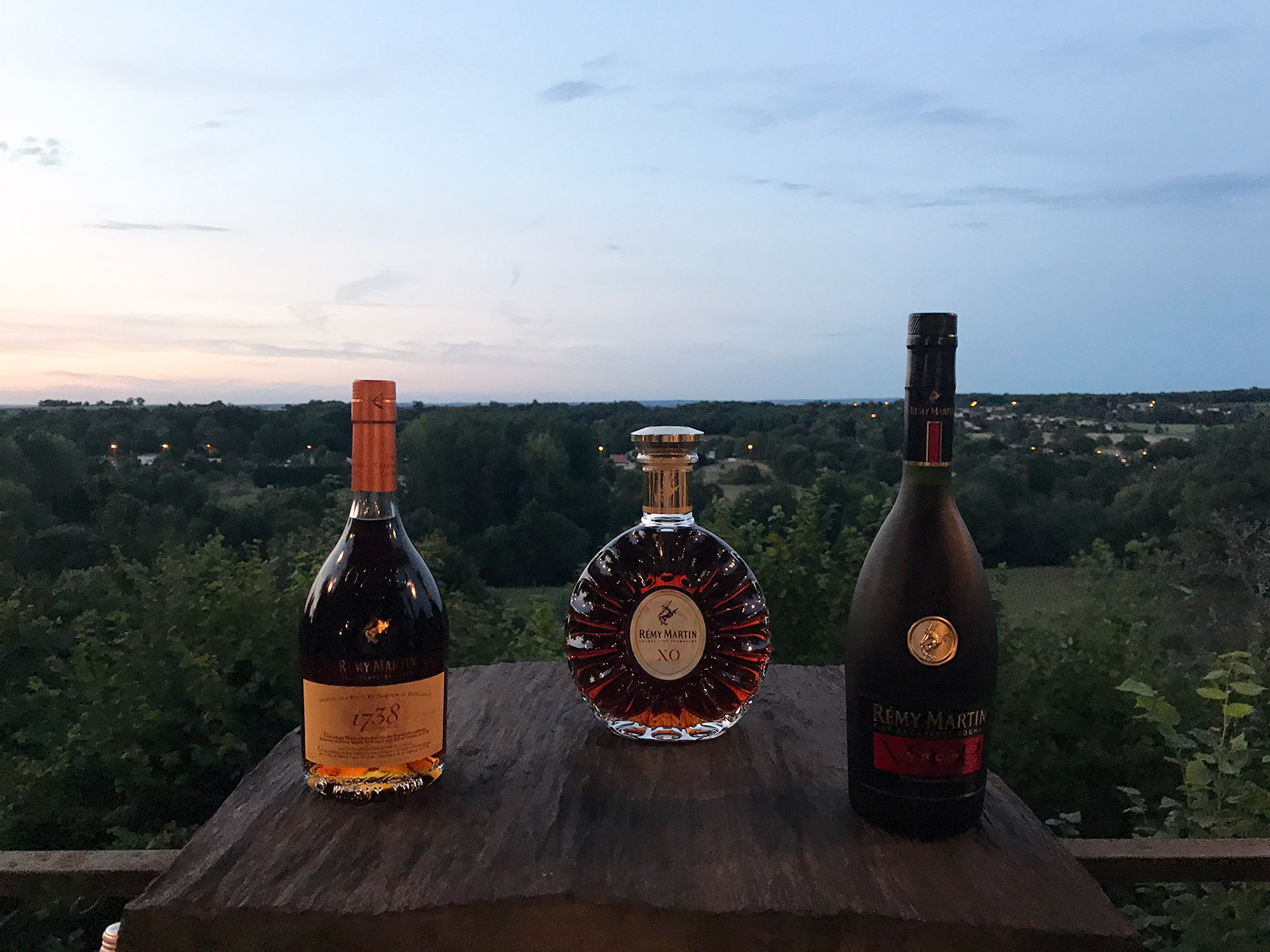Behind the Profile of Rémy Martin Cognac
Guiding 900+ growing partners toward the best eau de vie and ultimately a refined spirit

With cognac consumption on the rise around the world—including key markets like the US and China—an exhausted image of snifters in the hands of grandparents has been shed. Many consumers look to celebrities for recommendations. Some may even look back, for nostalgic reasons, to what the previous generations of their family drank. Taste, however, is the only reason you should buy a particular cognac. Tremendous variation in flavor exists between brands. This means that if one is a brown spirits lover, cognac is dynamic enough that just about anybody can find an appropriate fit for their palate. On a recent excursion through the vine-covered hills of Cognac, France, we took time to learn more about Rémy Martin. Their strongest point of focus—the eau de vie—benefits deeply from their relationships with 900 partner grape-growers and the guidance offered all the way through the rigorous process of small copper pot still distillation with the lees (more on this shortly). Many brands who produce at the scale of Rémy Martin do not adhere to such standards. Here, the result is an exemplary foundation for Rémy Martin’s range of products.

Walking through the sun-drenched vines of the region (which is controlled by a governing body that assures the specific standards and rules of what can be designated the appellation “cognac”), chalky limestone shines through the topsoil. It’s this porous material that defines the terroir and grants water to the vines year ’round. The Cognac region was defined properly in 1909, and then subdivided in 1938 to declare areas of particular quality. Rémy Martin only grows and works with growers in the Grande Champagne and Petite Champagne sections—the two premiere areas. This means they can declare their products “Fine Champagne Cognac.”
Rémy Martin owns vineyards but much hinges on the aforementioned 900 partner growers. Trust and vigilance are required—and many checks are put in place to assure quality. “This is a year-long process where you are at the mercy of nature,” third-generation grower Sonia Sicare explains to CH. Sicare, a one woman show, tends to her 16 hectares alone. “You can’t control climate. You can’t control nature. It’s a balance between having good production and respecting the environment,” she continues. It’s a year-long waiting game, during which Sicare seeks acidity versus sugary sweetness, as the grapes hit optimum maturity. She turns to the Rémy Martin team from time to time for guidance—especially in light of natural incidents, like this year’s very late frost in June.

Almost 40% of Rémy Martin’s growers then make their own wine and distill it themselves. Sicare is one of them. That said, in the town of Touzac, Master Distiller Jean-Marie Bernard oversees the one Rémy Martin distillery. When walking inside, guests are immediately taken by the fact that—in contrast to most other distilleries producing such vast quantities—there are no massive stills here. Rather, the grounds are filled with many small copper pot stills. As Bernard says, this impacts quality, noting that it’s much easier to control the output when cooking for four people versus 400. Their process of distilling with lees means that a proprietary yeast goes into the still with the wine. It releases ester, a fatty acid that will ultimately enable the eau de vie (distilled wine) to age much longer and release aromas. It also contributes to a richer mouthfeel. Rémy Martin requires that all their partners produce in nothing larger than a (quite small) 2500 liter still.

The eau de vie matters most; a good (or great) cognac cannot be made from a bad eau de vie. Tasting one that Bernard has produced acts as a model for all that they make and acquire. It comes out of the still at 70 proof, and it’s transparent because it’s both un-aged and drawn from fruit. At first it noses of flowers, jasmine and even orange blossom. With a drop of water, everything opens up. Ripe pear and green apple appears on the nose. The rich taste—an extension of the nose—lingers through a lengthy finish. It’s sturdy, meaning the potential for long aging is there. And when it’s placed into French oak, these fruit notes will turn to apricot and then fig and maybe one day something jammy with spice—signifiers of the desired Rémy Martin profile.

Cellar Master Baptiste Loiseau has the hardest job in production. He spearheads the blind tasting sessions, where a small committee decides what they will and will not accept from their growers. He also plans which eau de vie will go where—V.S.O.P, XO,
1738 or perhaps a limited edition product. He’s also a guardian of quality. “We already have such diversity, because of the terroir and the two regions,” he explains to CH. “My mission is to be sure that this diversity will be even more alive through the aging—depending on the type of cask I use.” Further, every year he must blend together cognacs in the style of the house. He’s not the keeper of a recipe but the keeper of a flavor that he must make year after year from different components each time.

To help us best understand the flavor profile the house desires, Loiseau explains, “The different kind of aromas I have evolve over time. There’s fruitiness first. Then spiciness develops through wood and then finally the floral nature will only arrive after decades of aging. My role is to be sure that in the final blend I will have harmony between these different types of aromas. I don’t want the wood to overcome the fruitiness. I don’t want the floral-ness to overcome the spiciness.” He strives for a final blend that incorporates all of it, harmoniously. Sometimes when he blends, he strikes it on the first try. Other times, it requires tinkering. “It took me years to be sure I could even do this job. You learn the grapes and the terroir. Then the eau de vie and the wood. Only at the end do you try to understand the blending of it all.” It will be decades before a cognac that Loiseau has worked on from start to finish will reach the market. Aging takes time after all. But his insight makes clear the way one of the world’s most prestigious cognac brands feels on the tongue when you take a sip right now.
Images by David Graver












